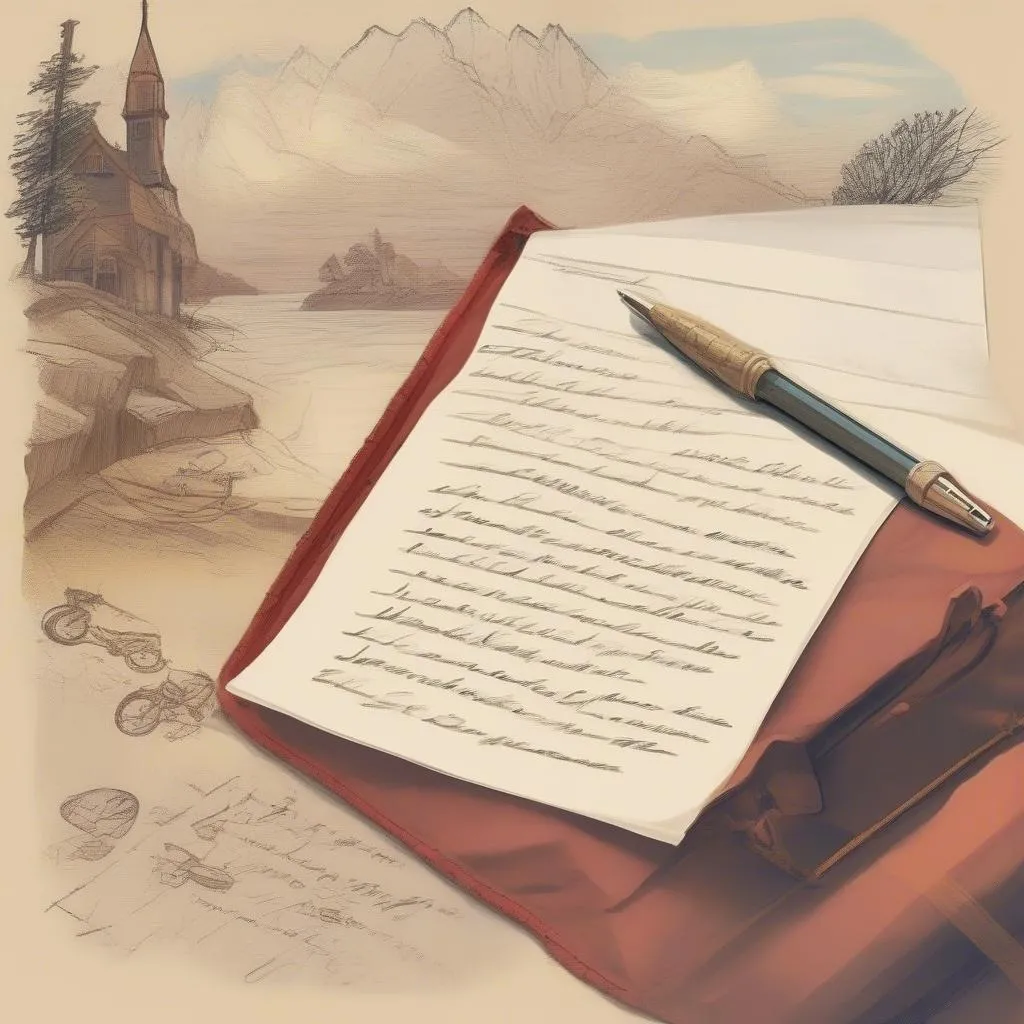Have you ever returned from an unforgettable journey, bursting with stories to tell, only to find your words falling flat? It’s like that magical feeling you had evaporates the moment you try to capture it in an email or text. Writing a captivating travel letter is more than just listing off souvenirs and sights. It’s about transporting your reader to the cobblestone streets of Rome or the bustling night markets of Bangkok. It’s about reliving the emotions, the scents, the flavors, and the energy of a place far from home.
Unpacking the Travel Letter: More Than Just a Postcard
Let’s be real, in the age of Instagram and instant updates, who even writes letters anymore? We do! Or at least, we should. Because a travel letter holds a different kind of magic. It’s a tangible piece of your journey, imbued with the energy and excitement you felt while exploring a new place.
Here’s why crafting a travel letter is worth the effort:
- A Personal Touch: Emails are easily deleted, social media posts get lost in the feed, but a letter? A letter is a keepsake. It shows the recipient that you took the time to share your experiences in a meaningful way.
- Reliving the Adventure: Writing a travel letter allows you to relive your adventures in vivid detail. Remember the thrill of paragliding over the Swiss Alps or the serenity of watching the sunset over the Pacific Ocean? As you write, those memories come flooding back.
- Sharing is Caring: A well-written travel letter can transport your reader to your destination. It allows them to experience the culture, the food, and the sights through your eyes.
Crafting Your Masterpiece: Tips for Writing an Engaging Travel Letter
1. Setting the Scene: Paint a Picture with Words
Imagine yourself back in that moment. What did you see, hear, smell, taste, and feel? Were you sipping Vietnamese coffee amidst the chaotic symphony of Hanoi’s Old Quarter? Or were you marveling at the grandeur of the Taj Mahal, the air thick with the scent of jasmine?
Example:
“The sun dipped below the horizon, casting long shadows across the Giza Plateau. As the call to prayer echoed across the desert, I stood in the shadow of the Sphinx, its enigmatic smile both haunting and mesmerizing.”
2. Beyond the Tourist Trail: Embrace the Unexpected
Sure, visiting iconic landmarks is amazing, but what truly makes a trip unforgettable are the unexpected encounters and experiences. Did you stumble upon a hidden gem of a restaurant down a winding alley in Florence? Did you have a hilarious conversation with a local shopkeeper in broken Spanish?
Example:
“While wandering through the labyrinthine streets of Marrakech, we came across a small riad with an unassuming wooden door. Inside, we discovered a hidden oasis of tranquility – a courtyard filled with the scent of orange blossoms and the gentle sound of a fountain.”
 hidden-oasis
hidden-oasis
3. A Dash of Humor: Don’t Be Afraid to Laugh at Yourself
Travel isn’t always glamorous. There are bound to be mishaps, language barriers, and moments where you feel completely out of your element. Embrace those moments and share them with humor.
Example:
“Ordering food in Thailand proved to be an adventure in itself. My attempt to order ‘Pad See Ew’ (a popular noodle dish) resulted in a plate of fried crickets. Let’s just say, I stuck to spring rolls for the rest of the trip.”
 thai-food-mishap
thai-food-mishap
4. The Power of Observation: Capture the Essence of a Place
Pay attention to the little details that make a place unique. Is it the vibrant street art scene in Buenos Aires or the intricate tilework adorning the mosques of Istanbul?
Pro Tip: According to travel writer, Sarah Johnson, author of “Journeys of the Soul,” “The best travel writing is often found in the details. It’s the small, seemingly insignificant moments that truly capture the essence of a place.”
5. Structure and Flow: A Letter, Not a Laundry List
While it’s tempting to cram every single detail into your letter, it’s important to maintain a structure that keeps the reader engaged. Organize your thoughts chronologically or by theme, and don’t be afraid to use headings and subheadings to break up the text.
 structure-and-flow
structure-and-flow